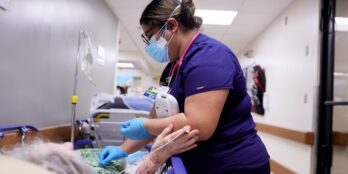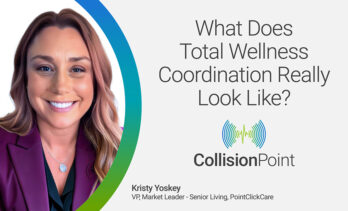
Three Strategies for Financial Recovery Post-COVID
 3 min
3 min
Senior Living, Skilled Nursing
In a recent survey of senior living facilities, about half said that they are operating at a loss as they continue to recover from the economic impacts of the COVID-19 pandemic. The main reason? Low occupancy levels. Senior living communities have seen populations steadily fall as a result of fewer people seeking long-term care, residents moving out and fewer referrals from hospitals.
For long-term and post-acute care (LTPAC) providers, diversifying revenue streams and improving the revenue cycle are top of mind. To remain financially successful, LTPAC facilities must connect care delivery and billing teams to produce accurate, standardized records of care. Doing this will increase operational efficiencies to retain staff and find the right residents to fit your facility.
Let’s take a closer look at each of these three strategies:
- Connect care delivery and billing teams: By connecting care delivery and billing, these teams can collaborate in real-time and make decisions based on the most up-to-date medical charts and analytics. Facilities can also increase revenue per resident by consistently capturing this care delivery data and using it to drive census decisions. Without accurate data, organizations can’t prove outcomes and be accurately reimbursed for the quality care provided.
- Increase operational efficiencies to retain staff: Staff turnover is extremely costly and can negatively impact a facility’s bottom line. With the right technology, however, facilities can create workflow efficiencies that positively impact staff retention, which is more important now than ever. The additional capital and resources gained can be directly reinvested into the workforce. Automated billing, for example, saves time, increases productivity, and improves staff satisfaction. By automating the entire billing process, providers can eliminate manual printing and mailing of statements. This not only creates a better experience for staff, but it also provides a better experience for residents and their families. With the increased flexibility, they enjoy having more payment options and self-service access to statements (present and historical), as well as online receipts.
- Find the right residents with the right needs/payers: Real-time data empowers facilities to evaluate each lead to decide on suitability and ensure seamless admissions, care planning, and increased occupancy. As part of this, providers can check the resident’s health coverage prior to admission to confirm they are able to pay for the services and ensure residents are placed in the right care setting. Over time, this process enables facilities to gain market intelligence and ultimately focus on higher value referral sources.
A Connected Business Improves the Bottom Line
Implementing the necessary tools to streamline manual activities and increase efficiency throughout a facility is the first step toward increasing occupancy and revenue. Keeping the full business connected through technology will help shorten the revenue cycle, close business faster, and improve the bottom line.
November 17, 2021






